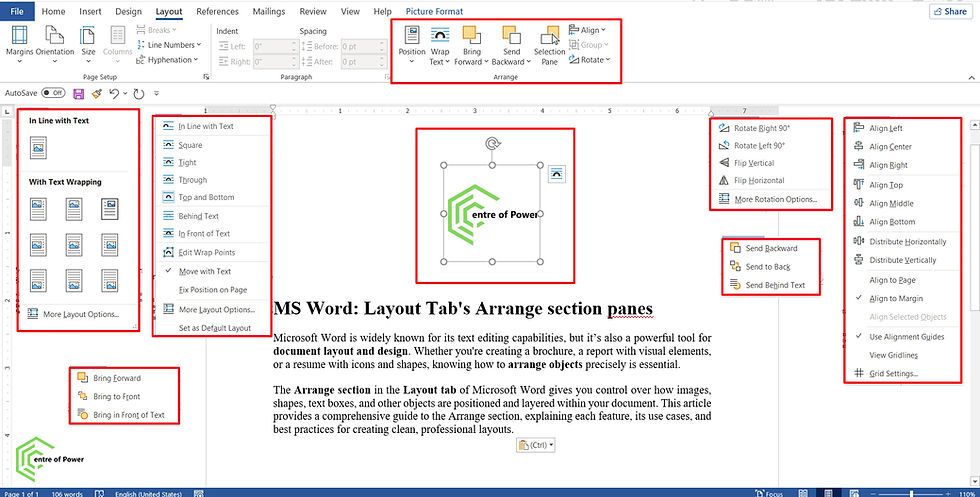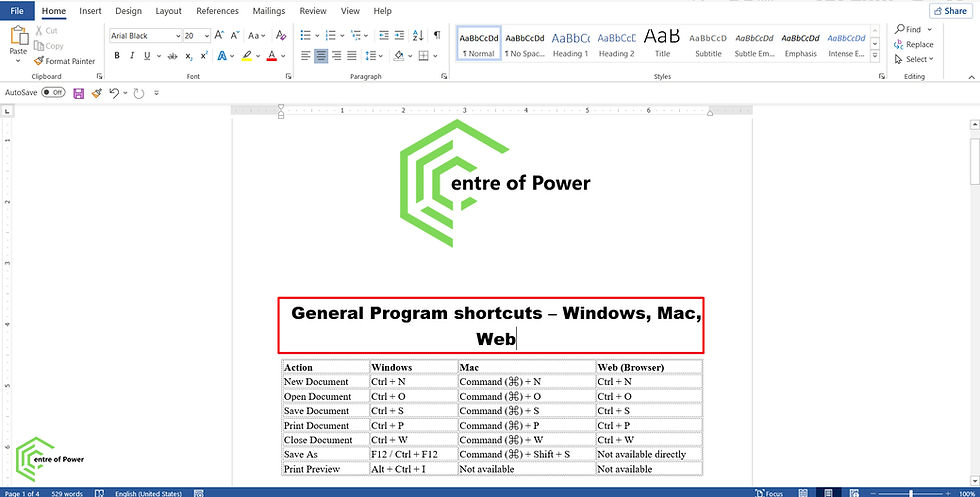MS Word: How to Use Footnotes in References Tab for referencing
- Fakhriddinbek

- Aug 29
- 3 min read
Updated: Aug 30
Footnotes are a valuable tool for adding citations, explanations, or supplementary information to a document without disrupting the main body of text. In academic writing, legal documentation, and professional reports, footnotes help maintain clarity while providing necessary context.
Microsoft Word simplifies the process of inserting and managing footnotes through its References tab, offering users a structured and automated way to handle annotations.
This article provides a complete guide to using the Footnotes feature in Word’s References tab, including how to insert, format, and manage footnotes effectively.

Accessing the MS Word Use Footnotes in References Tab for referencing
To begin working with footnotes in Microsoft Word:
Open your document.
Click on the References tab in the Ribbon.
Locate the Footnotes group, which includes:
Insert Footnote
Insert Endnote
Next Footnote
Show Notes
Footnote & Endnote dialog box launcher
MS Word Use Footnotes in References Tab for referencing tools allow you to add, navigate, and customize footnotes and endnotes throughout your document.
Inserting a Footnote
To insert a footnote:
Place your cursor where you want the footnote reference number to appear.
Click Insert Footnote.
Word will automatically add a superscript number at the cursor location and create a corresponding note at the bottom of the page.
Type your footnote content in the space provided.
Word handles numbering automatically and updates it as you add or remove footnotes.
Inserting an Endnote
Endnotes are similar to footnotes but appear at the end of the document or section.
To insert an endnote:
Place your cursor where the reference should appear.
Click Insert Endnote.
Word adds a superscript number and creates a note at the end of the document.
Endnotes are often used in formal publications where centralized referencing is preferred.
Navigating Footnotes and Endnotes
The Next Footnote dropdown allows you to move between notes efficiently. You can jump to:
Next Footnote
Previous Footnote
Next Endnote
Previous Endnote
This is especially helpful in documents with multiple annotations.
Viewing All Notes
Click Show Notes to open the footnote or endnote pane. This displays all notes in a single view, making it easier to review and edit them.
If both footnotes and endnotes are present, Word will prompt you to choose which type to display.
Customizing Footnotes
Click the Footnote & Endnote dialog box launcher to access advanced settings:
Location: Choose between placing footnotes at the bottom of the page or below the text.
Number Format: Select from numeric, Roman numerals, or symbols.
Custom Mark: Use a specific character instead of automatic numbering.
Starting Number: Set the initial number for footnotes.
Numbering Options: Choose continuous numbering or restart per section.
Conversion: Switch between footnotes and endnotes.
These options allow you to tailor footnotes to your document’s formatting requirements.
Best Practices for Using Footnotes
Use for Supplementary Information: Footnotes are ideal for definitions, citations, or brief clarifications.
Keep Notes Concise: Avoid lengthy explanations that could distract from the main content.
Maintain Consistency: Use the same numbering format and placement throughout the document.
Avoid Overuse: Excessive footnotes can clutter the page and reduce readability.
Review for Accuracy: Ensure all footnotes are correctly numbered and placed.
Common Use Cases
Academic Writing
Footnotes are used for citations, references, and commentary. Endnotes may be preferred for centralized referencing.
Business Documents
Add clarifications, data sources, or legal disclaimers without interrupting the main narrative.
Legal Documentation
Reference statutes, case law, or definitions using footnotes for clarity and compliance.
Instructional Materials
Provide additional instructions or background information in footnotes to support the main content.
Frequently Asked Questions
Can I convert footnotes to endnotes?
Yes. Use the Convert option in the Footnote & Endnote dialog box.
Can I change the numbering format?
Yes. You can choose from several formats including numbers, Roman numerals, and symbols.
Can I restart numbering in each section?
Yes. Select “Restart each section” in the numbering options.
How do I delete a footnote?
Delete the superscript number in the main text. Word will automatically remove the corresponding note.
Are footnotes clickable in Word?
Yes. Footnote references are hyperlinked by default, allowing easy navigation between the text and notes.
Final Thoughts
Footnotes in Microsoft Word’s References tab offer a reliable and efficient way to add annotations and citations to your documents. Whether you're writing a research paper, a business proposal, or a legal brief, footnotes help you maintain clarity and professionalism without cluttering your main content.
For more tutorials and tips on mastering Microsoft Word and other Office tools, explore our productivity hub at CentreOfPower.com.
Subscribe to our newsletter for weekly tutorials
Bookmark this page for quick reference
Share this article with your team or classmates
Explore our Microsoft Word tag for more formatting insights



Comments